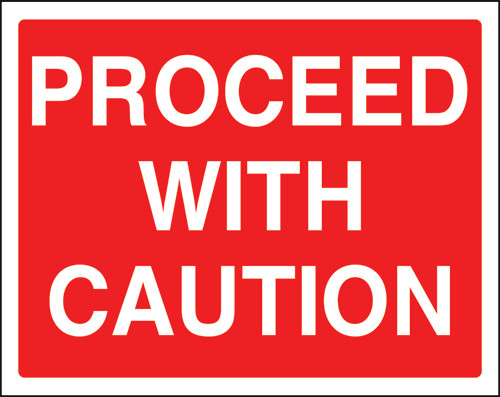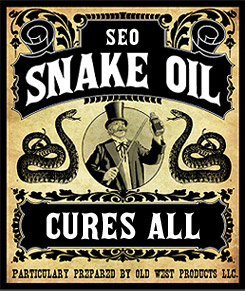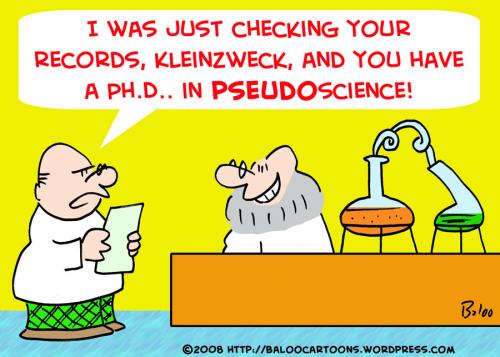 Lately I’ve had a number of children on my caseload with marked cognitive limitations. While I always attempt to integrate curriculum concepts into their therapy sessions, I also focus extensively on doing functional activities with them. These are tasks that pertain to daily living such as ordering food in a restaurant, shopping in supermarket, performing household activities, or looking up information. This is why I was very happy to come across Figuratively Speeching SLP’s activity: Bundled Supermarket Activities. Continue reading Language therapy for children with severe cognitive impairments: Focus on Function!
Lately I’ve had a number of children on my caseload with marked cognitive limitations. While I always attempt to integrate curriculum concepts into their therapy sessions, I also focus extensively on doing functional activities with them. These are tasks that pertain to daily living such as ordering food in a restaurant, shopping in supermarket, performing household activities, or looking up information. This is why I was very happy to come across Figuratively Speeching SLP’s activity: Bundled Supermarket Activities. Continue reading Language therapy for children with severe cognitive impairments: Focus on Function!
Search Results for: auditory processing/page/3/—http:/www.smartspeechtherapy.com/shop/creating-a-functional-therapy-plan-therapy-goals-soap-note-documentation/�http:/www.smartspeechtherapy.com/shop/creating-a-functional-therapy-plan-therapy-goals-soap-note-documentation
Speech Language Assessment Checklist Sample for Adolescents

What Research Shows About the Functional Relevance of Standardized Language Tests
 As an SLP who routinely conducts speech and language assessments in several settings (e.g., school and private practice), I understand the utility of and the need for standardized speech, language, and literacy tests. However, as an SLP who works with children with dramatically varying degree of cognition, abilities, and skill-sets, I also highly value supplementing these standardized tests with functional and dynamic assessments, interactions, and observations.
As an SLP who routinely conducts speech and language assessments in several settings (e.g., school and private practice), I understand the utility of and the need for standardized speech, language, and literacy tests. However, as an SLP who works with children with dramatically varying degree of cognition, abilities, and skill-sets, I also highly value supplementing these standardized tests with functional and dynamic assessments, interactions, and observations.
 Since a significant value is placed on standardized testing by both schools and insurance companies for the purposes of service provision and reimbursement, I wanted to summarize in today’s post the findings of recent articles on this topic. Since my primary interest lies in assessing and treating school-age children, for the purposes of today’s post all of the reviewed articles came directly from the Language Speech and Hearing Services in Schools (LSHSS) journal.
Since a significant value is placed on standardized testing by both schools and insurance companies for the purposes of service provision and reimbursement, I wanted to summarize in today’s post the findings of recent articles on this topic. Since my primary interest lies in assessing and treating school-age children, for the purposes of today’s post all of the reviewed articles came directly from the Language Speech and Hearing Services in Schools (LSHSS) journal.
We’ve all been there. We’ve all had situations in which students scored on the low end of normal, or had a few subtest scores in the below average range, which equaled an average total score. We’ve all poured over eligibility requirements trying to figure out whether the student should receive therapy services given the stringent standardized testing criteria in some states/districts.
Of course, as it turns out, the answer is never simple. In 2006, Spaulding, Plante & Farinella set out to examine the assumption: “that children with language impairment will receive low scores on standardized tests, and therefore [those] low scores will accurately identify these children” (61). So they analyzed the data from 43 commercially available child language tests to identify whether evidence exists to support their use in identifying language impairment in children.
 Turns out it did not! Turns out due to the variation in psychometric properties of various tests (see article for specific details), many children with language impairment are overlooked by standardized tests by receiving scores within the average range or not receiving low enough scores to qualify for services. Thus, “the clinical consequence is that a child who truly has a language impairment has a roughly equal chance of being correctly or incorrectly identified, depending on the test that he or she is given.” Furthermore, “even if a child is diagnosed accurately as language impaired at one point in time, future diagnoses may lead to the false perception that the child has recovered, depending on the test(s) that he or she has been given (69).”
Turns out it did not! Turns out due to the variation in psychometric properties of various tests (see article for specific details), many children with language impairment are overlooked by standardized tests by receiving scores within the average range or not receiving low enough scores to qualify for services. Thus, “the clinical consequence is that a child who truly has a language impairment has a roughly equal chance of being correctly or incorrectly identified, depending on the test that he or she is given.” Furthermore, “even if a child is diagnosed accurately as language impaired at one point in time, future diagnoses may lead to the false perception that the child has recovered, depending on the test(s) that he or she has been given (69).”
Consequently, they created a decision tree (see below) with recommendations for clinicians using standardized testing. They recommend using alternate sources of data (sensitivity and specificity rates) to support accurate identification (available for a small subset of select tests).

The idea behind it is: “if sensitivity and specificity data are strong, and these data were derived from subjects who are comparable to the child tested, then the clinician can be relatively confident in relying on the test score data to aid his or her diagnostic decision. However, if the data are weak, then more caution is warranted and other sources of information on the child’s status might have primacy in making a diagnosis (70).”
Fast forward 6 years, and a number of newly revised tests later, in 2012, Spaulding and colleagues set out to “identify various U.S. state education departments’ criteria for determining the severity of language impairment in children, with particular focus on the use of norm-referenced tests” as well as to “determine if norm-referenced tests of child language were developed for the purpose of identifying the severity of children’s language impairment” (176).
They obtained published procedures for severity determinations from available U.S. state education departments, which specified the use of norm-referenced tests, and reviewed the manuals for 45 norm-referenced tests of child language to determine if each test was designed to identify the degree of a child’s language impairment.
What they found out was “the degree of use and cutoff-point criteria for severity determination varied across states. No cutoff-point criteria aligned with the severity cutoff points described within the test manuals. Furthermore, tests that included severity information lacked empirical data on how the severity categories were derived (176).”
 Thus they urged SLPs to exercise caution in determining the severity of children’s language impairment via norm-referenced test performance “given the inconsistency in guidelines and lack of empirical data within test manuals to support this use (176)”.
Thus they urged SLPs to exercise caution in determining the severity of children’s language impairment via norm-referenced test performance “given the inconsistency in guidelines and lack of empirical data within test manuals to support this use (176)”.
Following the publication of this article, Ireland, Hall-Mills & Millikin issued a response to the Spaulding and colleagues article. They pointed out that the “severity of language impairment is only one piece of information considered by a team for the determination of eligibility for special education and related services”. They noted that they left out a host of federal and state guideline requirements and “did not provide an analysis of the regulations governing special education evaluation and criteria for determining eligibility (320).” They pointed out that “IDEA prohibits the use of ‘any single measure or assessment as the sole criterion’ for determination of disability and requires that IEP teams ‘draw upon information from a variety of sources.”
They listed a variety of examples from several different state departments of education (FL, NC, VA, etc.), which mandate the use of functional assessments, dynamic assessments criterion-referenced assessments, etc. for their determination of language therapy eligibility.
 But are the SLPs from across the country appropriately using the federal and state guidelines in order to determine eligibility? While one should certainly hope so, it does not always seem to be the case. To illustrate, in 2012, Betz & colleagues asked 364 SLPs to complete a survey “regarding how frequently they used specific standardized tests when diagnosing suspected specific language impairment (SLI) (133).”
But are the SLPs from across the country appropriately using the federal and state guidelines in order to determine eligibility? While one should certainly hope so, it does not always seem to be the case. To illustrate, in 2012, Betz & colleagues asked 364 SLPs to complete a survey “regarding how frequently they used specific standardized tests when diagnosing suspected specific language impairment (SLI) (133).”
Their purpose was to determine “whether the quality of standardized tests, as measured by the test’s psychometric properties, is related to how frequently the tests are used in clinical practice” (133).
What they found out was that the most frequently used tests were the comprehensive assessments including the Clinical Evaluation of Language Fundamentals and the Preschool Language Scale as well as one word vocabulary tests such as the Peabody Picture Vocabulary Test. Furthermore, the date of publication seemed to be the only factor which affected the frequency of test selection.
They also found out that frequently SLPs did not follow up the comprehensive standardized testing with domain specific assessments (critical thinking, social communication, etc.) but instead used the vocabulary testing as a second measure. They were understandably puzzled by that finding. “The emphasis placed on vocabulary measures is intriguing because although vocabulary is often a weakness in children with SLI (e.g., Stothard et al., 1998), the research to date does not show vocabulary to be more impaired than other language domains in children with SLI (140).“
According to the authors, “perhaps the most discouraging finding of this study was the lack of a correlation between frequency of test use and test accuracy, measured both in terms of sensitivity/specificity and mean difference scores (141).”
If since the time (2012) SLPs have not significantly change their practices, the above is certainly disheartening, as it implies that rather than being true diagnosticians, SLPs are using whatever is at hand that has been purchased by their department to indiscriminately assess students with suspected speech language disorders. If that is truly the case, it certainly places into question the Ireland, Hall-Mills & Millikin’s response to Spaulding and colleagues. In other words, though SLPs are aware that they need to comply with state and federal regulations when it comes to unbiased and targeted assessments of children with suspected language disorders, they may not actually be using appropriate standardized testing much less supplementary informal assessments (e.g., dynamic, narrative, language sampling) in order to administer well-rounded assessments.
 So where do we go from here? Well, it’s quite simple really! We already know what the problem is. Based on the above articles we know that:
So where do we go from here? Well, it’s quite simple really! We already know what the problem is. Based on the above articles we know that:
- Standardized tests possess significant limitations
- They are not used with optimal effectiveness by many SLPs
- They may not be frequently supplemented by relevant and targeted informal assessment measures in order to improve the accuracy of disorder determination and subsequent therapy eligibility
Now that we have identified a problem, we need to develop and consistently implement effective practices to ameliorate it. These include researching psychometric properties of tests to review sample size, sensitivity and specificity, etc, use domain specific assessments to supplement administration of comprehensive testing, as well as supplement standardized testing with a plethora of functional assessments.
SLPs can review testing manuals and consult with colleagues when they feel that the standardized testing is underidentifying students with language impairments (e.g., HERE and HERE). They can utilize referral checklists (e.g., HERE) in order to pinpoint the students’ most significant difficulties. Finally, they can develop and consistently implement informal assessment practices (e.g., HERE and HERE) during testing in order to gain a better grasp on their students’ TRUE linguistic functioning.
Stay tuned for the second portion of this post entitled: “What Research Shows About the Functional Relevance of Standardized Speech Tests?” to find out the best practices in the assessment of speech sound disorders in children.
References:
- Spaulding, Plante & Farinella (2006) Eligibility Criteria for Language Impairment: Is the Low End of Normal Always Appropriate?
- Spaulding, Szulga, & Figueria (2012) Using Norm-Referenced Tests to Determine Severity of Language Impairment in Children: Disconnect Between U.S. Policy Makers and Test Developers
- Ireland, Hall-Mills & Millikin (2012) Appropriate Implementation of Severity Ratings, Regulations, and State Guidance: A Response to “Using Norm-Referenced Tests to Determine Severity of Language Impairment in Children: Disconnect Between U.S. Policy Makers and Test Developers” by Spaulding, Szulga, & Figueria (2012)
- Betz et al. (2013) Factors Influencing the Selection of Standardized Tests for the Diagnosis of Specific Language Impairment
Guest Post: How to Jazz up your Speech Therapy Sessions on a Shoestring Budget
 Hello Smart Speech Therapy readers! My name is Lindsey and I started a blog called Word Nerd SpeechTeach in December 2012. I love creating products and sharing the activities that I do with my kids in speech therapy. Today, I am bringing you a blog post about great dollar store finds to jazz up your therapy sessions!
Hello Smart Speech Therapy readers! My name is Lindsey and I started a blog called Word Nerd SpeechTeach in December 2012. I love creating products and sharing the activities that I do with my kids in speech therapy. Today, I am bringing you a blog post about great dollar store finds to jazz up your therapy sessions!
I love the dollar store when it comes to therapy activities. I can’t leave the store without some awesome finds to incorporate into therapy sessions. Recently, I stopped at my local dollar store and (surprise, surprise) found some great items to spruce up my therapy sessions!! Continue reading Guest Post: How to Jazz up your Speech Therapy Sessions on a Shoestring Budget
Therapy Fun with Ready Made Fall and Halloween Bingo
 There are many fun yet highly educational therapy activities we can do with our preschool and school-aged clients in the fall. One of my personal favorites is bingo. Boggles World, an online ESL teacher resource actually has a number of ready-made materials, flashcards, and worksheets that can be adapted for speech-language therapy purposes. For example, their Fall and Halloween Bingo comes with both call out cards and a 3×3 and a 4×4 (as well as 3×3) card generator/boards. Clicking the refresh button will generate as many cards as you need, so the supply is endless! You can copy and paste the entire bingo board into a word document resize it and then print it out on reinforced paper or just laminate it. Continue reading Therapy Fun with Ready Made Fall and Halloween Bingo
There are many fun yet highly educational therapy activities we can do with our preschool and school-aged clients in the fall. One of my personal favorites is bingo. Boggles World, an online ESL teacher resource actually has a number of ready-made materials, flashcards, and worksheets that can be adapted for speech-language therapy purposes. For example, their Fall and Halloween Bingo comes with both call out cards and a 3×3 and a 4×4 (as well as 3×3) card generator/boards. Clicking the refresh button will generate as many cards as you need, so the supply is endless! You can copy and paste the entire bingo board into a word document resize it and then print it out on reinforced paper or just laminate it. Continue reading Therapy Fun with Ready Made Fall and Halloween Bingo
General Assessment and Treatment Start-Up Bundle

Tips Corner: Creating Opportunities for Spontaneous and Functional Communication
 In today’s guest post, Natalie Romanchukevich advises readers on how to create opportunities to expand children’s spontaneous communication skills.
In today’s guest post, Natalie Romanchukevich advises readers on how to create opportunities to expand children’s spontaneous communication skills.
Helping young children build speech- language skills is an exciting job that both caregivers and educators try to do every second of the day. We spend so much time giving our children directions to follow, asking them a ton of questions, and modeling words and phrases to shape them into eloquent communicators.
What I find we do NOT do enough, sometimes, is hold back on our never ending “models” of what or how to say things, questions, and directions, instead of allowing our children initiate and engage with us. Greenspan refers to these initiations as opening circles of communication (Weirder & Greenspan “Engaging Autism”, 2006).
Speech- language development can be thought of as having three interacting and equally important domains- Form ,Content, and Use (Lahey, 1988).
Form refers to the grammatical correctness of our words and sentences (eat vs. eat+ ing).
Content is what the we are essentially communicating- the meaning of our words and sentences.
Use (also known as pragmatics) refers to the function of our words or for what purpose we are using them.

The communicative functions that slowly emerge and characterize communication over the course of language acquisition in vary in typically developing young children. Children communicate to greet others, comment on objects/actions, request desired objects, request assistance, protest, deny (a statement), ask questions, regulate others (e.g. “blow!”, “open!”), entertain, and narrate events.
In order for children to be able to express these functions, aside from the intent to communicate, there must also be opportunities to express ideas, wants, needs. For example, why would Timmy request for an object (nonverbally or verbally) if the caregiver hands everything to the child at the slightest sign of a tantrum. Why ask a “where?” question if every toy or beloved object is comfortably in sight? Why ask for help if the caregiver readily assists the child with all activities. The educators describe it as assuming the child’s needs.
Of course we do it out of love and care for the child, and, let’s be honest, sometimes, to save time. However, it is important with both typical and delayed children to be mindful of what (form, content, use) we model, when (timing is crucial in teaching) we model it, how (facial expression, tone of voice, etc) we model it, and why (is it developmentally important to teach it now?) we model it at this very moment.
Just as it is important for kids to comprehend concepts, follow directions, and understand the different wh- questions, it is also paramount that your child is able to initiate communication. After all, communication is the ability to express ideas, thoughts, and wants, not just understand those expressed by others. Answering questions and following commands is not initiating. Language that is elicited by us- is not spontaneous.
To use language spontaneously, effortlessly and creatively, children need opportunities to practice the skill, to experience taking the lead. In order for our children to get there, we must first offer models of how to initiate communication and do so appropriately. We can then create opportunities for the child to speak up.

The most basic strategies you can use to encourage spontaneous initiations (whether nonverbal or verbal) may seem seem initially as counterintuitive. I mean what is the point to introducing attractive new toys or displaying a yummy snack and then putting it away? Yet it is exactly that action which may very much encourage your child to run after you with gestures or words. Even then, you may still choose to play “dumb” and be “unsure” as to what it is your child wants. Does s/he want that bag with new toy or snack “opened?” and “out?”
If the child is nonverbal, his use of gestures to regulate your actions to get the desired item out and open may be the child’s initial step toward sound imitation. If you are working on getting the child to request help (not just objects), here is your opportunity to model “help” if the child can’t open the item independently. On a side note, I often hear educators model “help me please!” when the child is clearly at a single word level. This is not a developmental way of teaching. Yes, it is nice to hear a full sentence but your child may not be ready for it.
While playing with your child and actively commenting on your joint play, you may find it productive to suddenly become quiet and cease all attempts to ask questions. This often works beautifully in my therapy sessions; usually, after I have engaged the child into some sort of cooperative and enjoyable play! But it takes a conscious effort and self-control on the part of the adult, since we are so used to engaging in this adult- directed (telling the child what to do as opposed to letting him/her lead and you follow) approach to teaching.

However, once you are able to contain your speech and actions (I promise you it is possible), you may be surprised to hear some immediate or delayed imitations of words/ phrases as well as spontaneous meaningful language. The language produced, to me, is an indication that the child wants more of the experience- more language enriched play. Use this opportunity to expand on what s/he is already saying.
Here, timing is really important as you want to imitate back everything your child is doing. This is another way to communicate with your child. Build on your child’s language to further describe the objects or people in play without using long sentences. So, allowing nothing to happen for a few minutes at a time may just be the push to help your child come out with some form of communication.
In addition, stopping a novel activity or toy exploration at the very height of your child’s excitement also works well with many children. You don’t have to be confrontational about it, “if you don’t imitate my word/ phrase I just won’t give it back to you”. make sure to create these “obstructions”, as Greenspan refers to them, in a friendly, playful and positive manner. Obstructions or fabricated “problems” are also a big part of social-cognitive and constructivist theories of language learning.
The idea behind these “obstructions” is that the children are forced to problem solve and use resources (language being one of them!) so they can get what they want. Allowing your child to problem solve is critical to overall cognitive development that affects and shapes speech and language. Presenting your child with developmentally appropriate activities that involve thinking and figuring out of how to get X is an invaluable strategy that I always use with all of my children.
In sum, stop access to items that are already loved, tape up containers, close boxes and jars with favorite snack and toys, give your child all but ONE important item that is needed to complete an activity (glue, scissors), give your child the “wrong” item, or offer the “wrong” solution to the problem. All of these “problems” will push the kid to think and figure out what to do next. This, in turn, facilitates spontaneous language use.
Letting go of control and just allowing for things to spill, break, or simply not follow the predictable comfortable routine, too, elicits a ton of speech- language and fun communication. These are the most teachable moments as our children experience all the new words and concepts first hand. Perhaps, this is why many children learn “dirty” or “wet” attributes before they learn their colors. These concepts are more easily learned because they are experiential and bring about relevant words to describe these personally relevant and emotional experiences. Cleaning up and taking turns arranging things back in place is super educational too as our children need to learn responsibility and helping others.

Moreover, exposing children to objects that are completely novel and foreign (but safe!) may help elicit an attempt to ask a question “what this?” because the child wants to know. The motivation is there. Now s/he needs language to get the answer from you. Some children may use a word with a rising intonation, which too is a question form, just not grammatically mature one. For example, “Hat?” is as much of a question as “Is that a hat?!”. If all your child is capable of verbalizing is “wow”, then you can go ahead and model “what IS that?” question a few times. Of course, you want to pair it up with an exaggerated expression of surprise and excitement in your voice.
To sum up, do not be afraid to experiment, get “messy”, stay silent, entice, intrigue and just wait for a few minutes to see what your child will do. Yes, we want to teach our children to attend, sit down for a structured activity, and identify objects, shapes, colors, and actions; but these adult- directed activities do not allow for self- expression or spontaneous language use. You also want to follow your child’s natural interests and inclinations as this is frequently a way into their world. If you show interest in your friend’s ideas and you let him/her speak, will they not want to bond with you even more? Will they not want to communicate with you?

Creative and talented teachers are those who can use unconventional materials presented in unexpected ways while targeting all the skills that must be learned! Learning to manipulate the environment to get the most out of your child’s skills can be difficult but indescribably rewarding.
References:
- Lahey, M. (1988). Language disorders and Language Development.
- Greenspan, S. & Weider, S. (2006). Engaging Autism: Using the Floortime approach to help children related, communicate, and think.
- Wetherby, A. & Prizant, B. (1990). Communication and Symbolic Behavior Scales. ChicagoIL: Applied Symblix.
Natalie Romanchukevich has a MS in Communication Sciences and Disorders from Long Island University (LIU) as well as Bilingual (Russian/English) Certification, which allows her to practice speech- language pathology in both Russian and English. Following graduation, Natalie has been working with both monolingual and bilingual 0- 5 population in New York City, and has been an active advocate for preschoolers with disabilities in her present setting. Natalie’s clinical interests and experience have been focused on early childhood speech- language delays and disorders including speech disorders (e.g., Articulation, Childhood Apraxia of Speech (CAS), Pervasive Developmental Disorders, Autistic Spectrum Disorders, Auditory Processing Disorders, Specific Language Impairment (SLI), as well as Feeding Disorders. Presently she is working on developing her private practice in Brooklyn, NY.
Alternative Therapies, Herbs, Pills, and Snake Oils or “What’s the Harm in That?”
 I’ve been meaning to write this post for some time and have finally decided to do it now due to an increased prevalence of “non-traditional” treatment options available to parents of language impaired children.
I’ve been meaning to write this post for some time and have finally decided to do it now due to an increased prevalence of “non-traditional” treatment options available to parents of language impaired children.
More and more unscrupulous or misguided individuals are offering fantastical cures to children diagnosed with the wide variety of disorders including but not limited to: Autism (ASD), Childhood Apraxia of Speech (CAS), language disorders, “Auditory Processing Deficits (APD)“, Dyslexia, and much much more.
What are some examples of controversial products and therapies you may ask?
Below I cite several links (which are in no way exhaustive) for your convenience.

Controversial Autism Treatments:
In 2013, Dr. Emily Willingham, guest writer for Forbes magazine wrote a post on the topic of “The 5 Scariest Autism ‘Treatments. In it she described some pretty horrifying methods (e.g., chelation, chemical castration, hyperbaric oxygen therapy) which purportedly promised to “cure” autism. For more information on other controversial treatments in autism click to read this keynote address entitled Evidence-Based Practices for Children with Autism Spectrum Disorders by Dr. Tristram Smith for The Society for Clinical Child and Adolescent Psychology (SCCAP).

Controversial Speech Sound Disorder Treatments
Dr. Caroline Bowen respected Speech Language Researcher from Australia has a delightfully edifying page on her website (http://speech-language-therapy.com/) entitled: “Controversial Practices in Children’s Speech Sound Disorders – Oral Motor Exercises, Dietary Supplements, Auditory Integration Training”. On it she thoroughly reviews non-research supported practices to improve children’s sound production including the use of oral motor/mouth exercises, dietary supplements (Apraxia Diet, Nourish Life Speak, Nutri Veda, etc.), as well as Auditory Integration Training (AIT).
Parent‐Friendly Information about Nonspeech Oral Motor Exercises (HERE)
Controversial Treatments for Children with Developmental and Learning Disabilities
Macquarie University Special Education Centre in Sydney Australia has even developed concise one-page briefings of a vast number of controversial treatments for children with developmental and learning disabilities (selected briefing links are below; the full list of briefings is available HERE):
- Behavioural Optometry
- Learning Styles
- Fast ForWord Language
- Cellfield Program
- The Listening Program
- Irlen Tinted Lenses and Overlays

How to Spot Controversial Practices?
In her 2012 post entitled: “10 Questions To Distinguish Real From Fake Science“, Dr. Emily Willingham wrote that “science consumers need a cheat sheet … when considering a product, book, therapy, or remedy”. She advised consumers to consider some of the following criteria:
- Consider the source
- Determine their agenda
- Do they use highly emotionally charged language or meaningless jargon?
- Are they relying on testimonials vs. evidence?
- Are they claiming to be exclusive?
- Do they mention words like ‘conspiracy’?
- Is their treatment promising to cure multiple unrelated disorders?
- What does the money trail reveal?
The truth is that there’s a lot of pseudoscience out there and as such it is very important for both parents and professionals not to fall into its trap. In 2012, Dr. Gregory Lof presented the following poster at the ASHA’s Atlanta Convention: “Science vs. Pseudoscience in CSD: A Checklist for Skeptical Thinking” to “help clinicians evaluate claims made by promoters of products or services to help determine if they are based on scientific principles or on pseudoscience”. An interactive version of the checklist is available HERE, and for the summary based on the checklist, written by Mary Huston, fellow SLP and author of the Speech Adventures, click HERE.
So what do pseudoscientific practices/claims look like?
- People place heavy emphasis on beliefs and opinions vs. data, when it comes to therapeutic claims
- SLPs: “You are wrong! I’ve seen ________ work with my clients!”
- Parents: “Who cares about your research this _______worked for us so HOW DARE YOU question it?
- The presented data is based on “expert opinions”, testimonials, and isolated case studies
- “These ridiculously expensive ‘speech sticks’ at $120 a pop worked for us, Yay!”
- Data is disseminated via self-published books, popular press, proprietary websites lacking research sections, as well as non-peer reviewed conferences.
- You might want to review the list of predatory publishers HERE, review the guide of how to spot a bogus scientific publication HERE, and if you ever find yourself reading anything on this website, I suggest you close your laptop as fast as you can and possibly put it into another room for a while (Read Why – HERE).
- Treatment sounds like a magic potion since it works on a wide range of disabilities, appeals to fears and wishful thinking, preys on the desperate and uses hyperboles (“miracle cure”)
- Use of disdainful comments against researchers because “only clinicians do real clinical work”coupled with over reliance on clinician’s experience and subjective judgment since it’s the “best way” to determine effectiveness
- “I’ve found ___________ to be highly effective with gazillion clients”.
- Lack of change in practices despite a veritable mountain of evidence to the contrary
- “Your child NEEDS oral-motor exercises, NOW, for his speech to get better”
- New terms are created to mask use of disproven pseudoscientific practices

Why do we keep believing when all the evidence points to the contrary?
Because our brains become emotionally attached to ideas. This is further supported by the construct of two biases.
Confirmation bias – our tendency to look for/interpret information in a way that confirms our beliefs by “cherry picking” the evidence that supports what we believe in and ignoring the evidence that argues against it.
Disconfirmation bias – when facing with evidence which directly contradicts our beliefs we will criticize and reject it because we do not want to be wrong.

So now let’s get back to talk about the title of this post: “What’s the harm in that?”
While I am accustomed to seeing the variation of this statement on parent forums, I was surprised when I learned that it’s popping up quite often in some unexpected places such as during IEP meetings or during doctor visits (as reported to me by some of my client’s parents).
So I wanted to take this opportunity to explicitly point out what the harm in these alternative practices could be, ranging from the obvious to the hidden.
For starters some of these ‘therapies’ could kill!
- Over the years there has been a number of reports regarding deaths from controversial autism treatments including chelation and GcMAF injections.
Even if they don’t kill you they can cause some nasty side effects!
- To illustrate, Nourish Life Speak Nutrients, which were prescribed to children to “increase their language output or to make them speak better”, were so loaded with vitamin E (way above the legal amount), that a number of children who were taking them experienced significant seizure activity.

It’s going to cost you!
- Out of sheer desperation, families will spend tens of thousands of dollars on ‘alternative’ treatments which are ineffective at best and harmful at worst. To illustrate via a fairly benign example. Here’s the typical question that can be seen on a variety of parent forums pertaining to therapies for “(C) APD”: Q: My nine-year-old was diagnosed with mild auditory processing problems and ADHD, inattentive type. It was recommended that she do Fast ForWord. This is very expensive — $3,500 in the office and $1,100 at home. Does this program work and is there a benefit to doing it in the office? I would hate to spend $3,500 for nothing. The problem is that “systematic reviews found no sign of a reliable effect of Fast ForWord® on reading or on expressive or receptive spoken language.” So where does that leave the parents who spend thousands of dollars on this program in hopes that it really will improve oral language and reading abilities of their children? This leads me to my next point.

They create false hope!
- Whether it’s a placebo or the Hawthorne effect, or just a desperate desire to believe that something is working after you have sank so much hope, time, money, and energy into it, it may look like ineffective treatments are working at least for a short period of time. However, sooner or later parents start to notice that the issues whatever they may be continue to persist or even worsen despite the provided treatment. To illustrate, let’s take an example of a child with severe speech delay who is prescribed oral motor exercises to improve their speech production. At first, it appears that doing tongue curls, blowing kazoos, and chewing on bite blocks appears to be working and the child’s speech seems more intelligible. However, soon the parents may realize that while this expensive treatment is taking a significant period of time to complete the child’s speech production did not functionally improve since the therapist did not work directly on increasing the child’s repertoire of sounds and words.
They can create a sense of bitterness and hopelessness!
- Ever spoken to parents who have tried every alternative treatment possible and have subsequently given up? If you haven’t, I assure you it’s not a pleasant or productive conversation. At best you will hear a lot of vitriol and accusations and at worst they may actually start a forum thread or a website bashing effective treatments such as speech language therapy because of their negative experiences. When you believe that you have tried everything and it’s still not helping, you feel defeated and lost and as a result tend to attack blindly anyone who attempts to assist you because you’ve stopped perceiving it as assistance but rather as just another scam.

They delay effective research-proven treatments!
- Last week I wrote a blog post entitled: “Why (C) APD Diagnosis is NOT Valid!” citing the latest research literature to explain that the controversial diagnosis of APD tends to a) detract from understanding that the child presents with legitimate language based deficits in the areas of comprehension, expression, social communication and literacy development and b) may result in the above deficits not getting adequately addressed due to the provision of controversial APD treatments. In other words I was in NO way trying to disprove that the processing deficits exhibited by the children diagnosed with “APD” were not real. Rather I was trying to point out that these processing deficits are due to a different cause – namely a language disorder which has turned into a language disability and as such needed to be addressed by linguistic rather than ‘auditory’ therapies. In other words what research has found you can get auditory therapies indefinitely and with great frequency but they would still NOT generalize to improve the child’s language abilities (including reading) in the affected areas. The problem is that by delaying legitimate therapies (e.g., in the above case evidence-based reading intervention for the student) there is a significant risk of poorer social and academic outcomes as the child grows older.
They affect self-esteem and self-efficacy!
- Now enough about parents and professionals. Let’s actually take a moment to talk about effect of these alternative practices on the most important people in question: the children who are on the receiving end of it! Let’s talk about all the negative effects that can be incurred by them by undergoing these useless treatments time after time. And no I am not actually talking about the hugely dangerous treatments, which can cause physical harm or awful side effects. I am talking about the relatively benign treatments of “vision therapy”, “memory training”, etc.
- To illustrate, I work with are very bright 11-year-old boy with significant reading deficits and an extensive history of reading disabilities in the family. This boy’s deficit is in the area of reading, there is no doubt about it! He knows it and it’s very acutely aware of it. However, at the advice of well-meaning professionals he was taken to a behavioral optometrist, who told his mother that his issues with reading are due to visual processing deficits (despite the fact that his ophthalmologist ruled out any vision difficulties and declared his vision to be 20/20). It was then recommended that he undergo a costly vision therapy program in order to improve his “visual processing”. Guess, what his first words were, when I saw him in my office for reading intervention? ‘I went to the doctor who told me that I have problems in my eyes and that I need to stop reading! So I can’t do any more reading because of my eye problems.’ Imagine how he will feel when after several months of costly therapies there will be no functional improvement in his reading skills, since the only thing which can improve his reading abilities is the actual targeted reading instruction!
- Our students are very acutely aware when something is not working. Just like us they get increasingly frustrated after being dragged from one professional to another, after ‘suffering’ through one controversial treatment after another with no respite in sight. Imagine what havoc it begins to wreak on their self-esteem and their self-efficacy (belief in own abilities to complete tasks and reach goals), when they keep undergoing these treatments without any improvement? All the negative self-talk they will use? Here are just a few statements I’ve heard over the years: “I am so stupid”; “There’s something wrong with my brain”, “I am not good at this, etc.) Instead of building them up these alternative therapies and treatments will not just tear them back down but may potentially cause behavioral and psychiatric effects to boot.
 There you have it: that’s what the harm is! The toll of these quack practices can be very significant and can go far beyond the financial. So the next time someone utters the statement: “What’s the Harm in That?” consider the above information in order to make the informed decisions regarding the treatment for the most vulnerable parties involved: the children in your care!
There you have it: that’s what the harm is! The toll of these quack practices can be very significant and can go far beyond the financial. So the next time someone utters the statement: “What’s the Harm in That?” consider the above information in order to make the informed decisions regarding the treatment for the most vulnerable parties involved: the children in your care!
Privacy Policy
- What personally identifiable information is collected from you through the website, how it is used and with whom it may be shared.
- What choices are available to you regarding the use of your data.
- The security procedures in place to protect the misuse of your information.
- How you can correct any inaccuracies in the information.
Information Collection, Use, and Sharing
We are the sole owners of the information collected on this site. We only have access to/collect information that you voluntarily give us via email or another direct contact from you. We will not sell or rent this information to anyone.
We will use your information to respond to you, regarding the reason you contacted us. We will not share your information with any third party outside of our organization, other than as necessary to fulfill your request, e.g. to ship an order.
Unless you ask us not to, we may contact you via email in the future to tell you about specials, new products or services, or changes to this privacy policy.
Your Access to and Control Over Information
You may opt out of any future contacts from us at any time. You can do the following at any time by contacting us via the email address or phone number given on our website:
- See what data we have about you, if any.
- Change/correct any data we have about you.
- Have us delete any data we have about you.
- Express any concern you have about our use of your data.
Security
We take precautions to protect your information. When you submit sensitive information via the website, your information is protected both online and offline.
Wherever we collect sensitive information, that information is encrypted and transmitted to us in a secure way. You can verify this by looking for a lock icon in the address bar and looking for “https” at the beginning of the address of the Web page.
While we use encryption to protect sensitive information transmitted online, we also protect your information offline. Only employees who need the information to perform a specific job (for example, billing or customer service) are granted access to personally identifiable information. The computers/servers in which we store personally identifiable information are kept in a secure environment.
Cookies
We use “cookies” on this site. A cookie is a piece of data stored on a site visitor’s hard drive to help us improve your access to our site and identify repeat visitors to our site. For instance, when we use a cookie to identify you, you would not have to log in a password more than once, thereby saving time while on our site. Cookies can also enable us to track and target the interests of our users to enhance the experience on our site. Usage of a cookie is in no way linked to any personally identifiable information on our site.
If you feel that we are not abiding by this privacy policy, you should contact us immediately via our Contact Form
Fall Season Monthly Themes and Events Focus for Language Therapy

